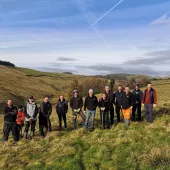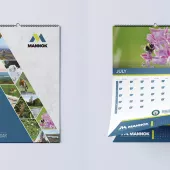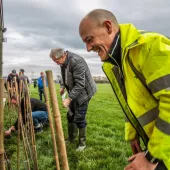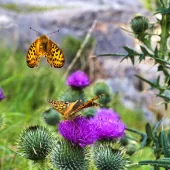Biodiversity: Progress through Partnership
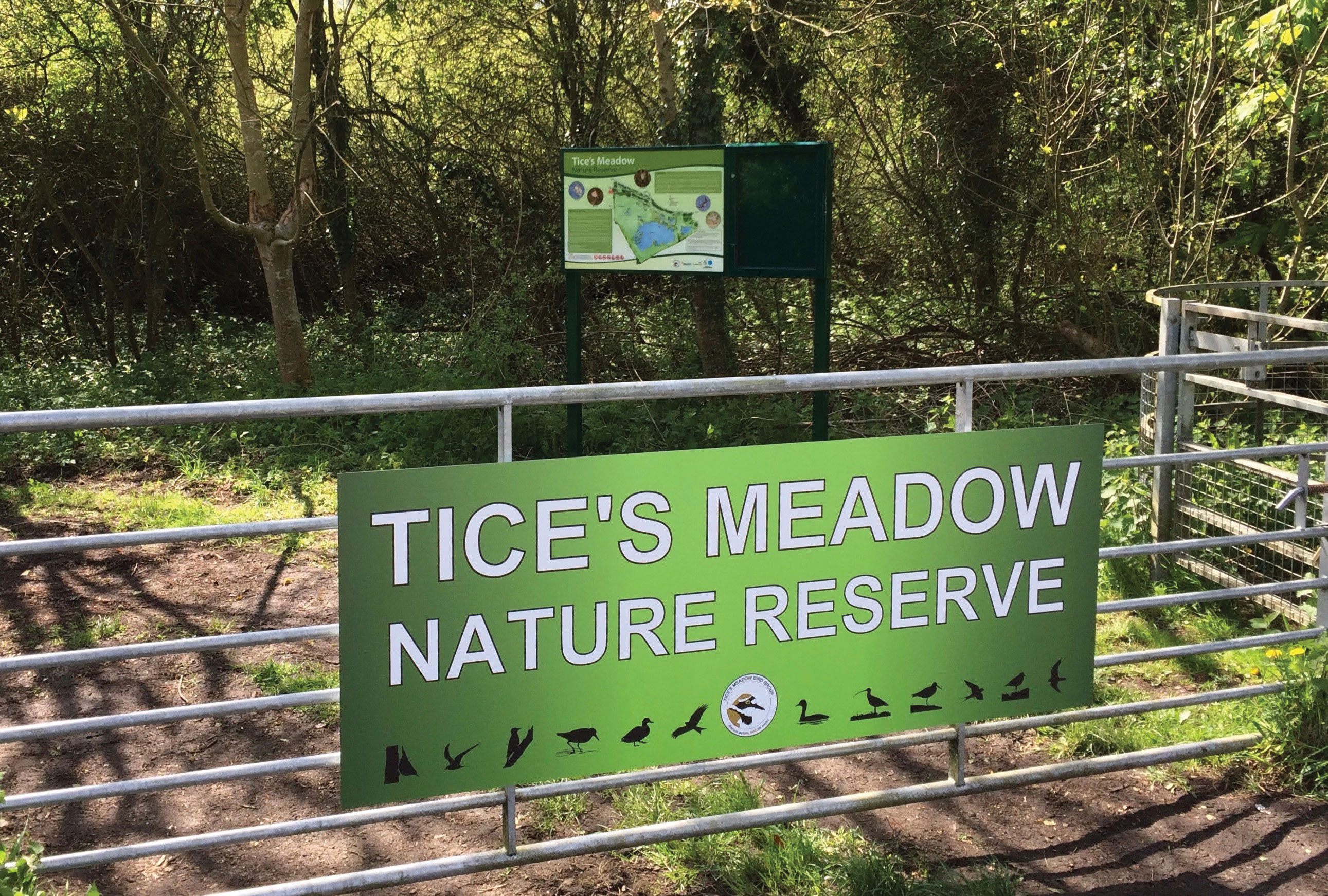
First published in the June 2019 issue of Quarry Management
Hanson outline the enormous benefits derived from working in partnership to create the award-winning Tice’s Meadow Nature Reserve and Biodiversity Trail
Natural resource protection, enhancing the environment and creating sustainable communities all form part of Hanson UK’s commitment to be a leading sustainable business. This ambition is not only reflected by the sustainable business practices the company implements, but also by the close relationships it has developed with its neighbours and stakeholders.
Working in partnership with statutory and non-statutory bodies, at both a local and national level, has helped the company to implement best practice to enhance the biological value of its quarrying sites as resources that can boost the biodiversity of local environments and enrich nearby communities.
Hanson have invested heavily to ensure both their working and former quarries are restored to the best-possible after-use and, over the years, their sites have provided habitats and unique living conditions for an abundance of wildlife, including rare and protected species.
One example of Hanson’s investment in the restoration of working and former quarries to provide both habitats for rare and protected species and a valuable community asset is their former Farnham Quarry in Surrey. Initially known as Runfold Quarry, the 140-acre sand and gravel site opened in 1998 and was operational until 2010, when gravel extraction ceased and work commenced to transform the quarry into a community nature reserve.
Prior to restoration, the site had already made a significant contribution to the wetland biodiversity of the Blackwater Valley. Reports of large numbers of golden plover at the site in 2004 saw it become a regular spot for birdwatching and, in 2006, the Royal Society for the Protection of Birds’ (RSPB) ‘Nature After Minerals’ group used the site as a case study exemplar for wet meadow restoration. By 2009 the quarry was adopted as Site of Nature Conservation Interest (SNCI).
As part of the site’s Biodiversity Action Plan, which includes a 20-year aftercare and management programme, Hanson worked with The Tice’s Meadow Bird Group, Blackwater Valley Countryside Partnership and Surrey County Council to ensure the quarry they once managed as part of their mineral extraction process would continue to provide a valuable biodiversity resource to the community. This included restoring and developing the site’s wetland, lowland, open water and woodland habitats to encourage species such as otters, bats, wintering wildfowl and breeding birds as well as dragonflies and damselflies.
Two footbridges over the river Blackwater completed the restoration phase last year with the opening of Tice’s Meadow nature reserve – a 55ha site comprising a mosaic of open water, gravel islands and scrapes, reed beds, scrub, woodland and wet and dry grasslands. The new bridges allow access to a previously under-visited area of site, which lies on the reserve’s newly established 1.5-mile long circular walk, known as the Tice’s Meadow Biodiversity Trail.
More than 40 people representing community groups, conservation bodies and local government attended the opening of the trail, which coincided with the Tice’s Meadow management committee’s annual ‘Bioblitz’ weekend involving local wildlife groups, schools and individuals carrying out a nature survey to determine the species colonizing the restored quarry site. The group toured the trail, taking in the reserve’s abundant habitats and wildlife. To date, some 200 bird species have been recorded, including swifts and record numbers of siskin and chaffinches.
The Tice’s Meadow Biodiversity Trail also featured in the fourth edition of the Quarry Life Award. Introduced in 2011 by Hanson’s parent company, HeidelbergCement, it has promoted the benefits that quarrying sites can have on protecting and enhancing nature on an international scale. The biennial award programme, which promotes biodiversity across 1,000 sites worldwide both during and after extraction, saw more than 100 project groups from 25 countries compete in different categories following the motto: ‘Nature will be the biggest winner’.
For the first time, the competition was split up into two streams: research and community, so that entries could be made by community groups as well as scientists and researchers.
Scooping the second UK spot for the best research project submitted by a community group was Tice’s Meadow Nature Reserve for its Biodiversity Trail project. The scheme, submitted by the Tice’s Meadow Bird Group, went on to win the Connecting Quarries and Communities prize (more than £9,000) and was recognized as one of the top seven international performers, which were celebrated during an award ceremony in Brussels.
The project’s fully accessible, self-guided circular walk around the nature reserve was developed to bring nature and biodiversity closer to visitors. The Tice’s Meadow Bird Group set about creating the trail to include a variety of the reserve’s habitats and showcase the work being done on site. In doing so, they wanted to attract new visitors to engage with, educate and encourage them to return, as well as gain the interest of new volunteers.
A combined site map and community noticeboard at the start of the trail, as well as waymarkers along the walk, to guide visitors, and interpretation panels placed at key locations, to enhance the visitor experience and increase engagement with the wildlife, are some of its features. The needs of visitors with disabilities and restricted mobility are also considered with the installation of a Radar gate, benches at suitable intervals, and the re-profiling of the site’s main viewing mound.
The project also provides the site’s wildlife with new habitats to feed in, and new breeding and hibernation sites as well as new opportunities to monitor and record the site’s biodiversity. This includes 45 additional nest boxes placed along the route of the trail – each fitted with hinged lids to allow the group’s licenced bird ringer to adopt a box-monitoring and ringing scheme – and a wildflower plot to educate visitors about butterflies, bees and other meadow wildlife.
Another key construction is a swift tower with nesting sites for 11 pairs of swifts, to help this threatened species of bird regain a foothold in the Blackwater Valley. There has been a 50% decline in the numbers of swifts returning to the UK in the last 20 years.
A woodland bird feeding station to allow visitors to have close views of the birds, without the need for expensive optics, has also been created and has attracted species such as blue, great, coal and long-tailed tits, goldfinches, chaffinches, bullfinches, blackbirds, dunnocks, house sparrows and robins.
The project was commended by the Quarry Life Award judges for its collaborative efforts with stakeholders – from cub scouts through to local residents – who were fully engaged in the trail’s development process to create a sense of community ownership.
Richard Grimmett, director for conservation with BirdLife International and a Quarry Life Award jury member, said: ‘We were hugely impressed by the considerate stakeholder engagement – with more than 20 different organizations involved throughout the life of the project. The project team not only supported a rich diversity of nature through creating new habitats, but ensured the long-term success of the site through local community buy-in and sense of ownership.’
The group liaised with national bodies during the design stage and educational opportunities for children have also been developed and used at each stage of the project – from guided tours and bird-ringing demonstrations, through to the printed maps and activity sheets they can download for free from the Tice’s Meadow website.
‘Our Biodiversity Trail assists in explaining the site and the wildlife to visitors and is key to our efforts to extend our activities beyond quarry borders,’ said Tice’s Meadow Bird Group chairman Richard Horton.
‘Community engagement is integral to the work we do on site, and is essential to the long-term prospects of the Tice’s Meadow Bird Group and the nature reserve itself. We’re both excited and delighted that our community project has been regarded so highly in this international conservation competition. It has inspired us to do more with the prize money going towards our next ambition – to build a purpose-made bank for sand martins to nest in within the reserve.’
Stewart Jones, national sustainability manager at Hanson UK, added: ‘Tice’s Meadow is considered to be one of the best inland sites to watch birds in south-east England. Thanks to its new biodiversity trail, people have started to engage with wildlife that can be found on their doorstep and knowledge of the site’s biodiversity has increased with a significant increase of visitors and volunteers. It is a fantastic example of progress through partnership and the enormous benefits that can be derived from working together.’
- Subscribe to Quarry Management, the monthly journal for the mineral products industry, to read articles before they appear on Agg-Net.com


